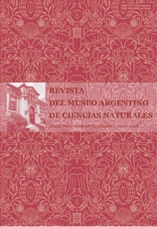El registro polínico atmosférico de San Carlos De Bariloche: setiembre 2001- setiembre 2002
Resumen
Airborne pollen monitoring in San Carlos De Bariloche: September 2001-September 2002. The atmosphere of San Carlos de Bariloche was sampled for airborne pollen from September 2001 to September 2002. A volumetric Lanzoni VPS 2000 spore trap was placed at a height of 15 metres in the urban area. The whole region lies in one of the strongest humidity gradients in the world, clearly reflected by the vegetation. To the west the city limits with the easternmost boundary of the patagonian rainforest, and to the east it extends to the steppe. Daily average pollen concentration (grains/m3) was calculated using standard methodology. Our findings revealed the presence of 48 different pollen taxa belonging to native and exotic plants. The principal period of pollen season lasted from October to January. Cupressaceae (540grains/m3) and Nothofagus (60 grains/m3) reached the maximum values of pollen concentration. Cupressaceae (52.6%), Nothofagus tipo dombeyi (19.7%), Pinaceae (10.3%), Betula (4.9%), Poaceae (3.9%), Rosaceae (1.6%) and Plantago (1.4%) contributed with 95 % of total pollen. The mapping of urban vegetation revealed that the most abundant species at the local pollen area were Maytenus sp. (20.26%), Pinus sp. (18.44%), Betula sp. (9.87%), Populus sp. (5.45%) and Prunus sp. (4.42%). These studies are the first step in an attempt to develop clinical and epidemiological studies of pollinosis in this region.
Texto completo:
PDFEnlaces refback
- No hay ningún enlace refback.

This work is licensed under a Creative Commons Attribution 3.0 License.

